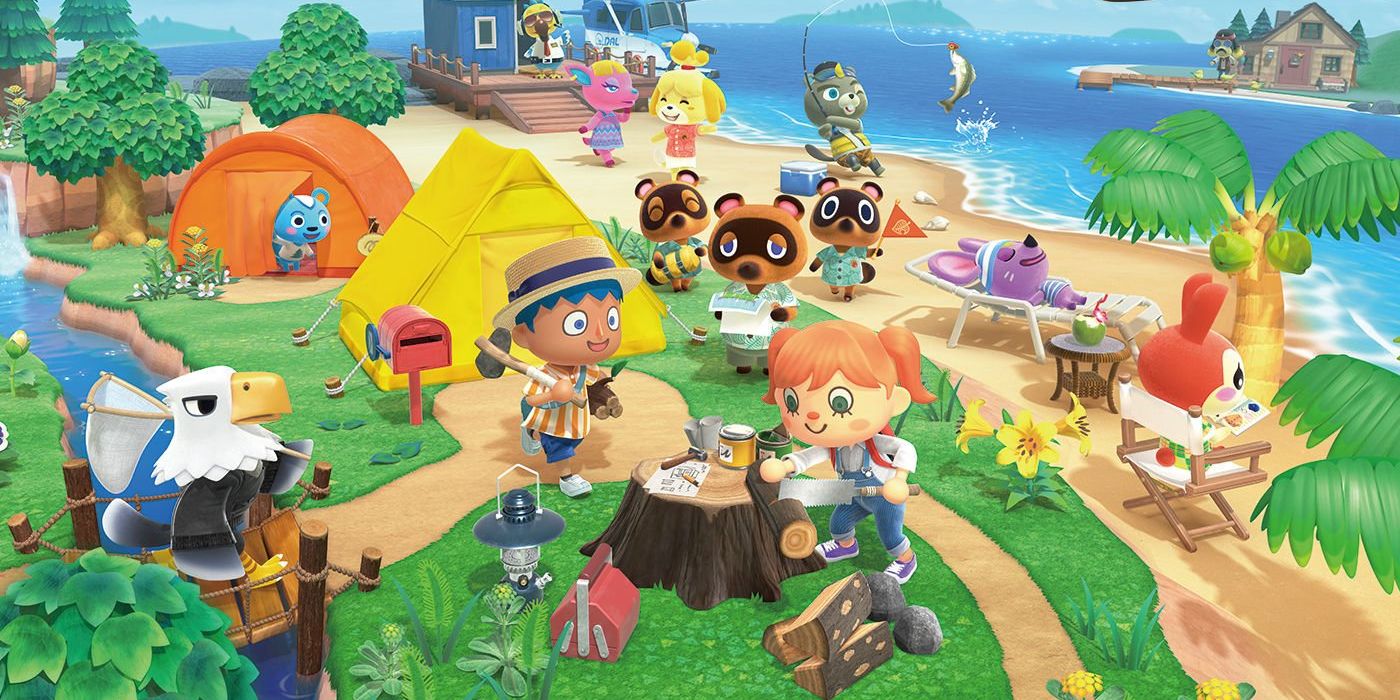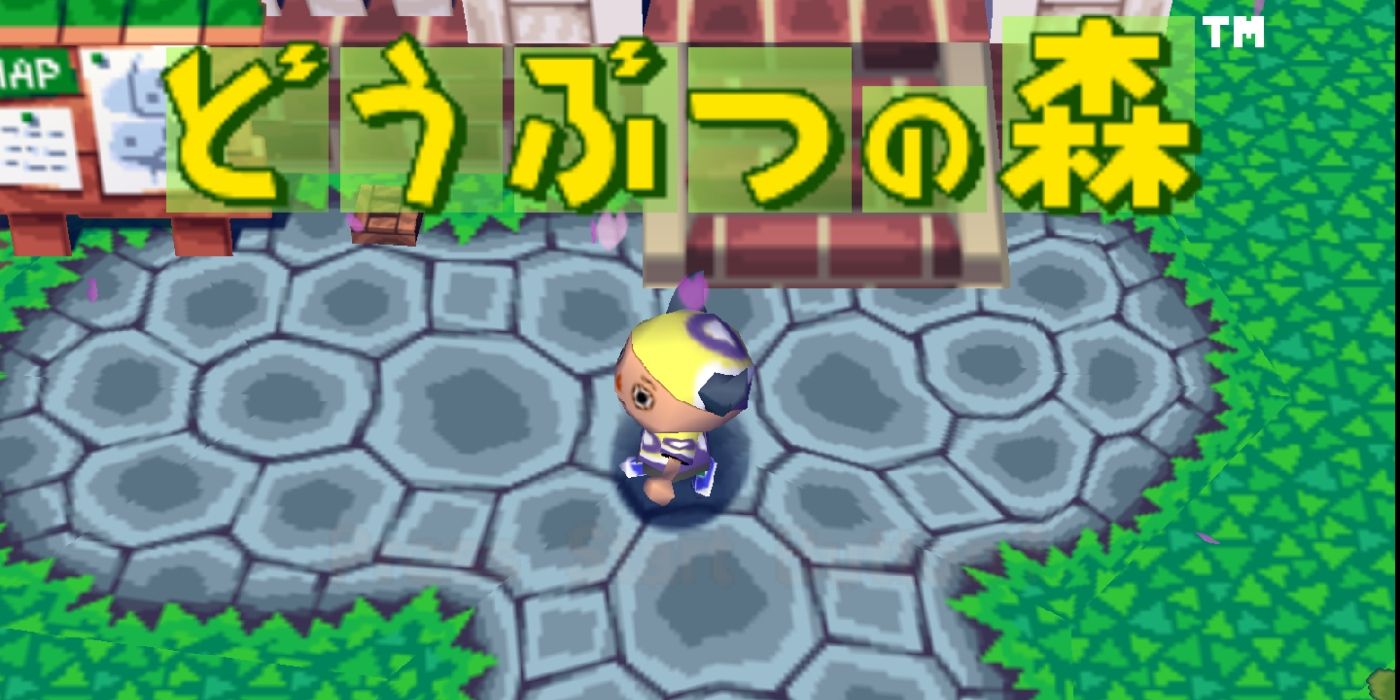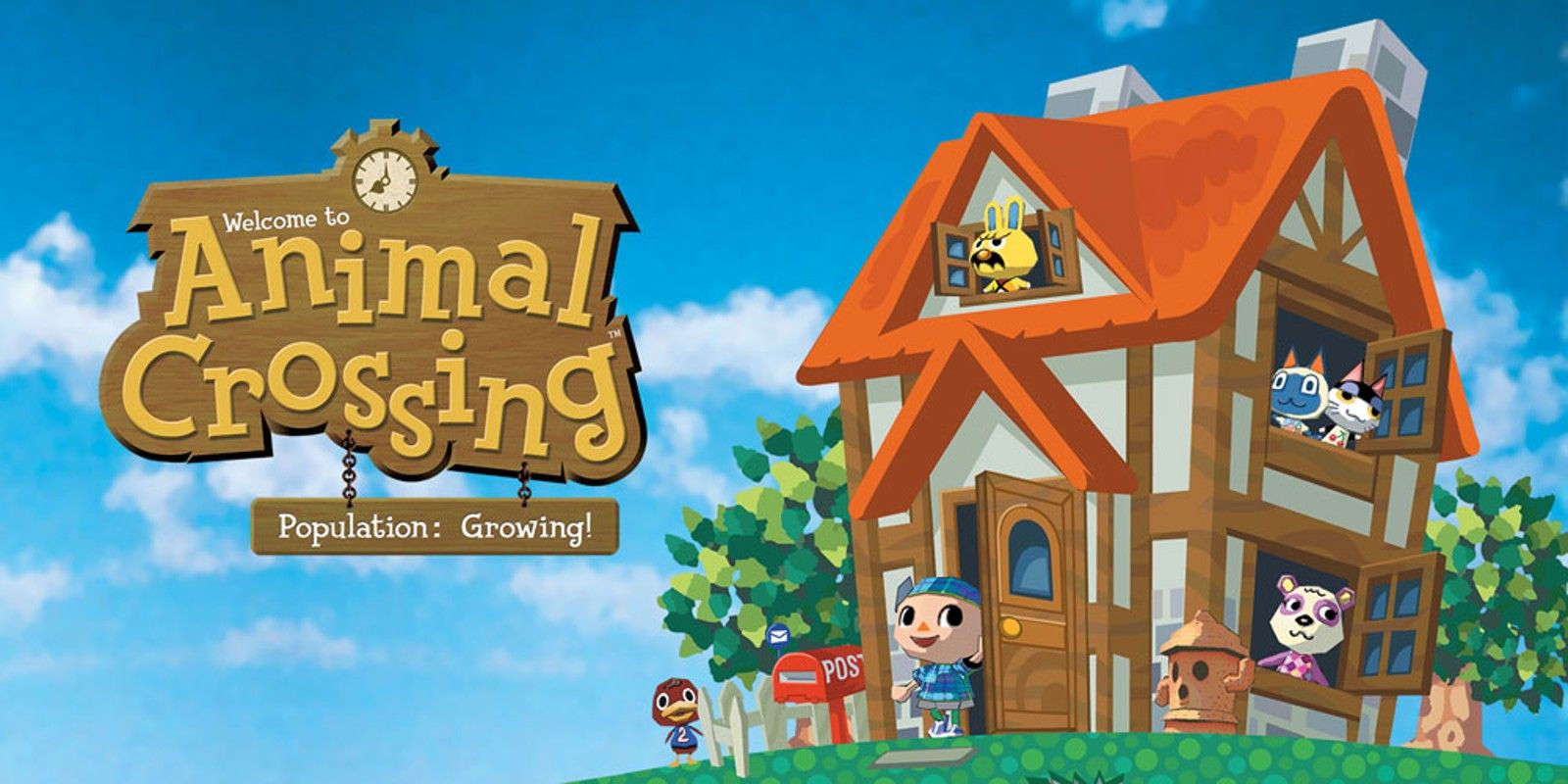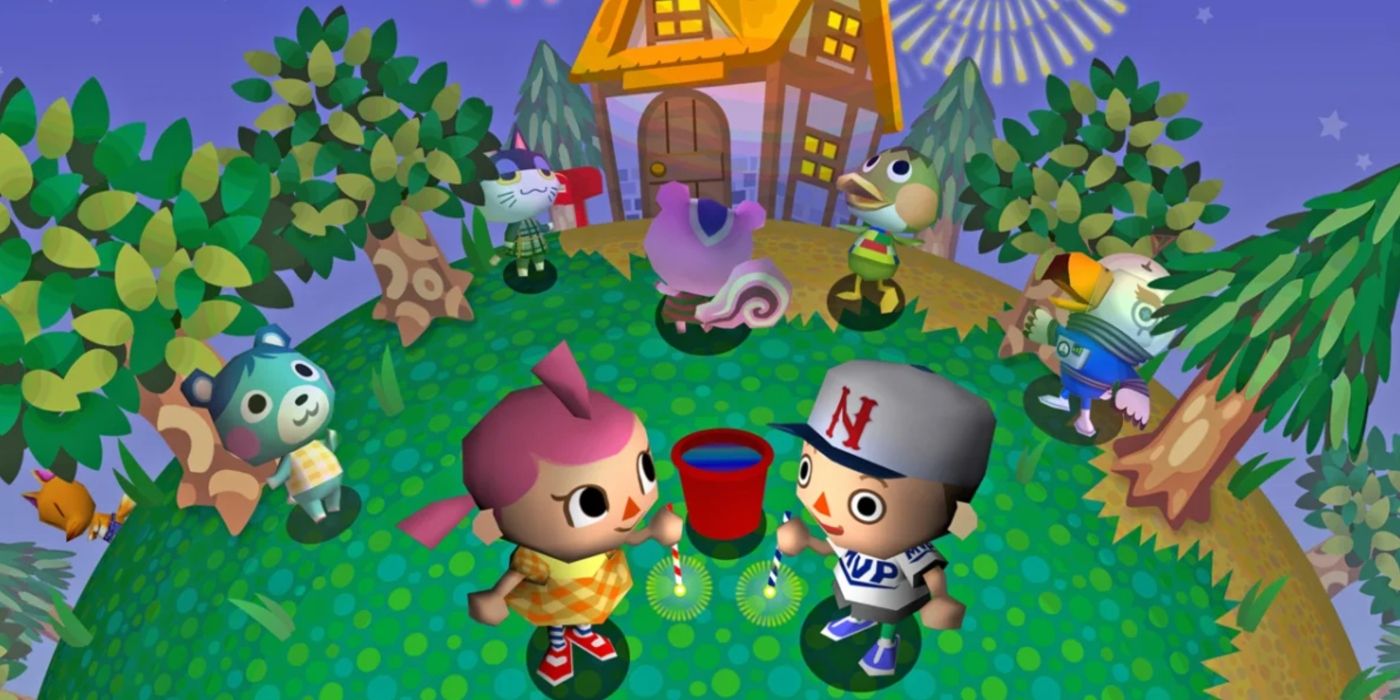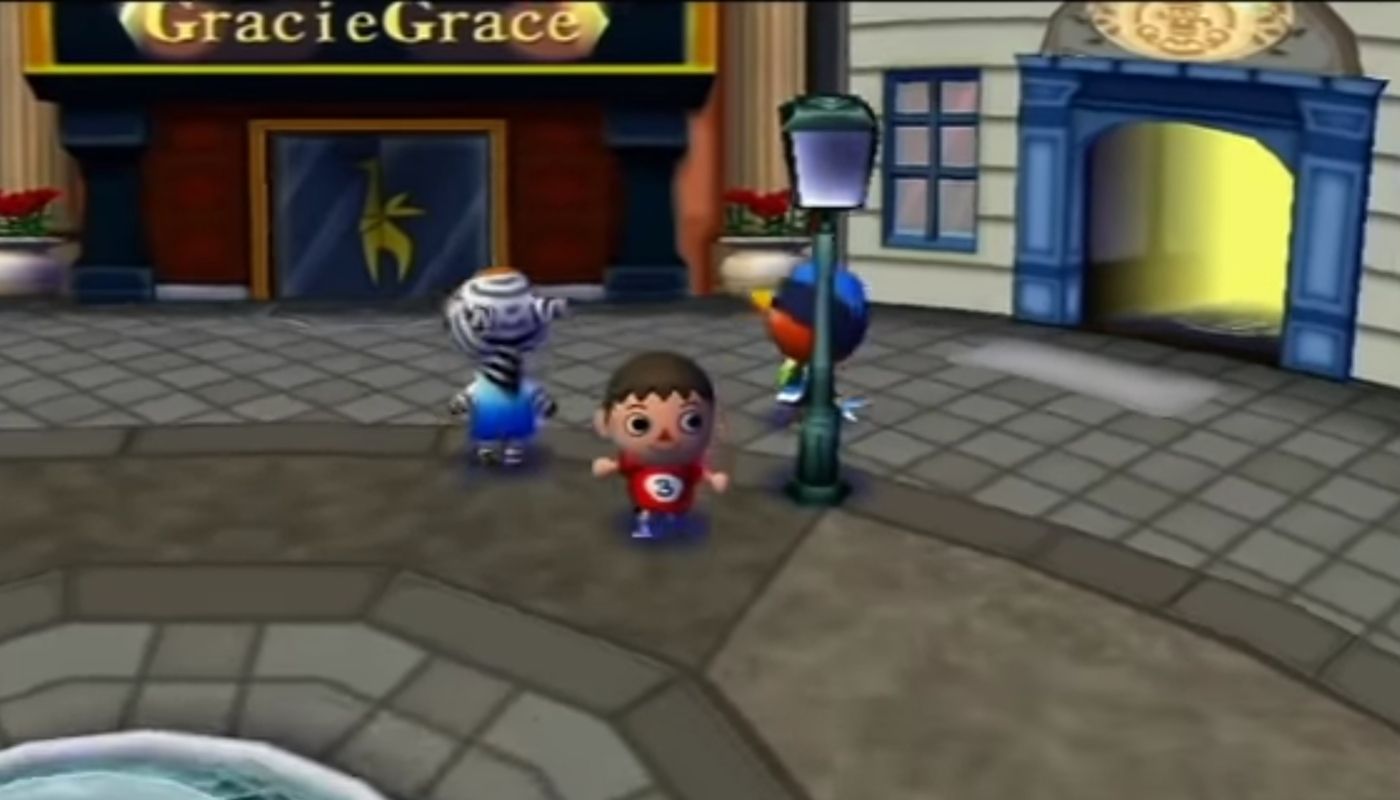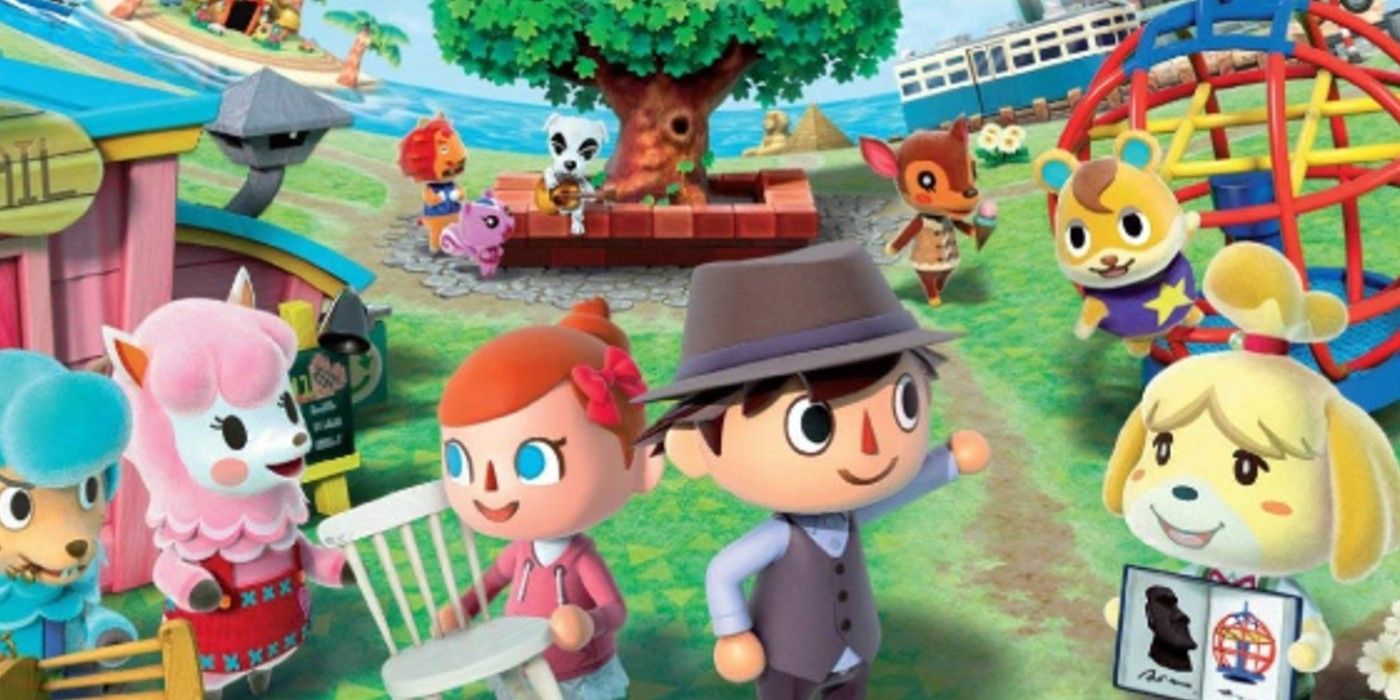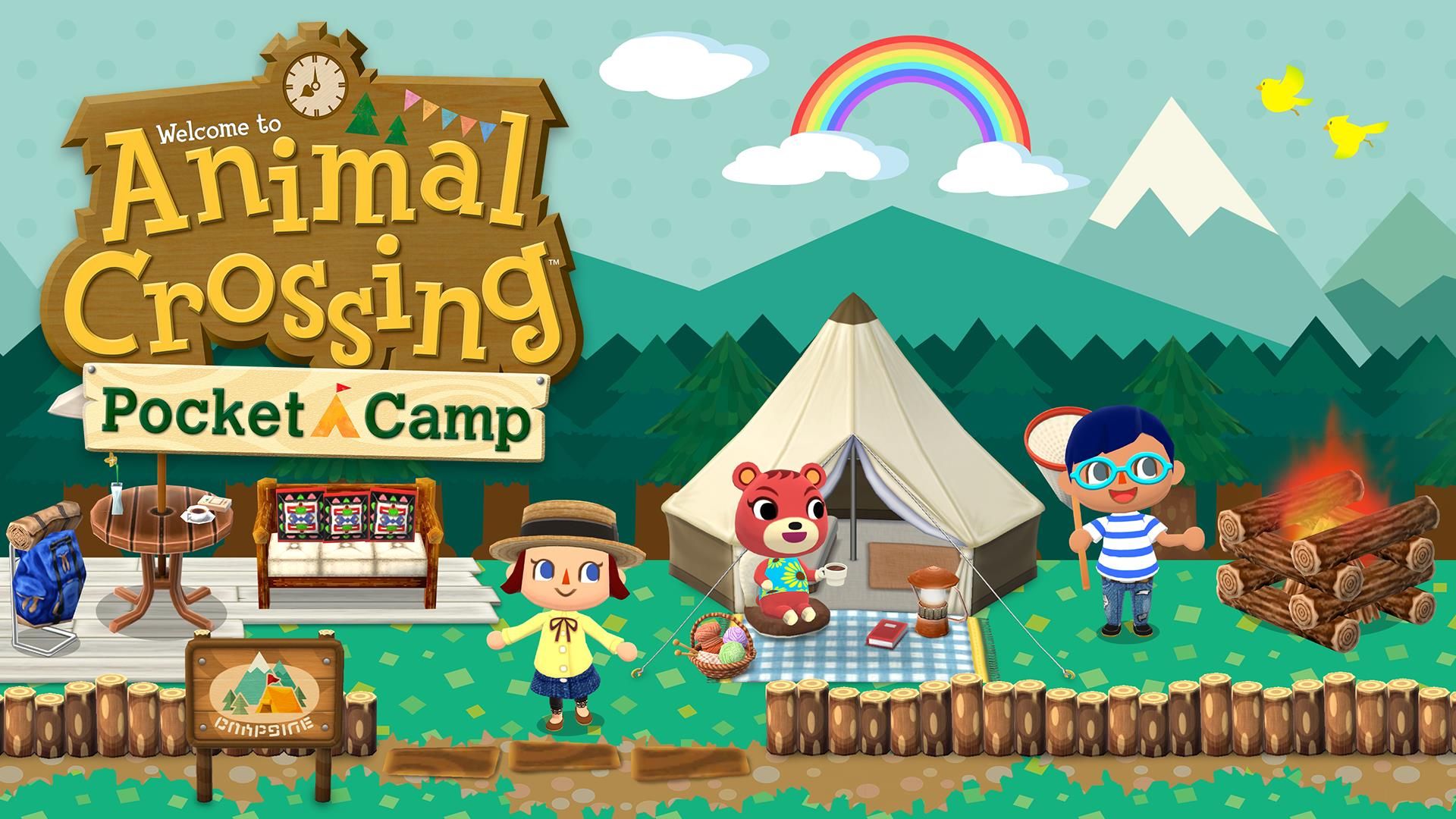Animal Crossing, the adorable life-with-talking-animals simulator, is Nintendo's tenth best-selling franchise. Animal Crossing: New Horizons will be the franchise's first main series release since 2012, and it promises even more adorable, wholesome fun and customization options than every before.
With excitement for the series at a fever pitch, now is a better time than ever to look at the history of the nearly 20 year old series and see how it all leads to this month's island getaway.
Animal Forest
American gamers' first experience with the series may have come in the form of Animal Crossing, but the actual first entry in the series was the Japan-only release of Dōbutsu no Mori (Animal Forest) for the Nintendo 64 on April 14, 2001. The game was unlike others of its time because the player was free to do whatever they wanted within the game's world, including fishing, chatting with their anthropomorphic neighbors and catching insects. The primary purpose of the game (if there really even was one) was to collect Bells to pay off the loan on your villager's home, increase your house's size and to buy furniture to decorate its interior. Players could earn Bells by selling pretty much any item they could find.
Like future games in the series, the game was played in real-time. Since the Nintendo 64 didn't actually have an internal clock, the Game Pak was shipped with an internal clock that players would have to set when starting the game. It was also one of the few games to utilize the Expansion Pak, which allowed players to experience the game in 640x480 resolution rather than standard 320x240.
Animal Crossing
Less than a year after the release of Dōbutsu no Mori, Nintendo released an enhanced version of it, entitled Dōbutsu no Mori+, for the GameCube. This is the game that introduced the rest of the world to Animal Crossing.
Despite not really using the advanced hardware of the GameCube to improve the graphics, Animal Crossing did take advantage of its new console by implementing the hardware's internal clock. Rather than making the players set the clock like in the original, the game would read the date and time from the system itself, creating a living game that continued even after players stopped playing. As a result, villagers could experience the passage of time themselves (including holidays) and find out what may have happened when they weren't playing by speaking to their animal neighbors or reading the bulletin board.
Though the core gameplay of Animal Crossing was mostly identical to its Japanese predecessor, there were a number of significant changes in the new iteration. The ability to buy and design patterns from the Able sisters, donate to Blathers in the museum and travel to a distant island with Kapp'n were among the many new additions in this version.
Animal Crossing: Wild World
Animal Crossing sold relatively well, but the series skyrocketed after the 2005 release of the Nintendo DS sequel. While overall gameplay was mostly the same, players could now use Nintendo Wi-Fi Connection to travel to and interact with the villages of their friends. Additionally, the game utilized the unique dual-screened layout of the DS to allow new levels of interaction and customization with the touch screen and stylus.
Animal Crossing: Wild World was also the first game in the series to switch from a flat, grid-based world to one that was curved and continuous. Unlike the previous entry where all individual players lived in separate houses, all players in Wild World shared one house.
Animal Crossing: City Folk
After the massive success of the handheld Wild World, Nintendo tried to match that triumph on home consoles by bringing the series to the Wii in 2008. The major new addition to this iteration was the inclusion of the city, an area to which players could travel for the purposes of changing their villager's hairstyles, buying new clothes and attending events such as auctions and shows.
Another new feature was the ability to receive new content through WiiConnect24. These two features, combined with a cleaner graphical look and intuitive Wii Remote controls, were not enough to make the game feel particularly different from its immediate predecessor. Critics responded accordingly, making it the lowest-scoring game in the mainline series. Fans of the series were equally apathetic to its release, as demonstrated by the sales for City Life dropping to nearly a third of those of Wild World.
Animal Crossing: New Leaf
The fourth and final mainline entry is both the best-selling and highest-rated in the series, and for good reason. Building from the same central concept established by its predecessors (including having its own city-like area on the other side of the railroad tracks), New Leaf set itself apart by being the most feature and character-packed Animal Crossing game of them all.
Released on the Nintendo 3DS in Japan in 2012 and worldwide in 2013, New Leaf's set itself apart from previous games. While keep the central elements of gameplay intact, this game started with the player arriving in a new town only to be mistaken for the town's new Mayor. As the Mayor, players received an unprecedented level of control over the developments and layout of their town. Through Public Works Projects and Ordinances, players could construct new bridges and facilities and make shops open earlier or close later.
Additionally, players could use the 3DS's StreetPass feature to participate in the Happy Home Showcase, allowing them to share and view their villager's homes and furnishings with those they happened to pass while out in the real world. In 2016, New Leaf was updated to add Amiibo support and a new camp site area.
Spin-offs
The Animal Crossing franchise has only had three new releases since the launch of New Leaf, all of which were spin-offs of the main series. The first of which is Animal Crossing: Happy Home Designer. The game released for the 3DS in 2015 and focuses exclusively on the home-decoration aspects that were popularized by the main series.
Animal Crossing: Amiibo Festival released later that year for the Wii U. Like Mario Party, Amiibo Party is a board-game style multiplayer game. However, it was poorly received and is the lowest-rated Animal Crossing game to date.
Finally, in 2017, Nintendo released a mobile entry into the series with Animal Crossing: Pocket Camp. This game focused on a campsite that players could decorate while also building relationships with the other campers and collecting items to trade.
Animal Crossing: New Horizons releases March 20 on the Nintendo Switch.

